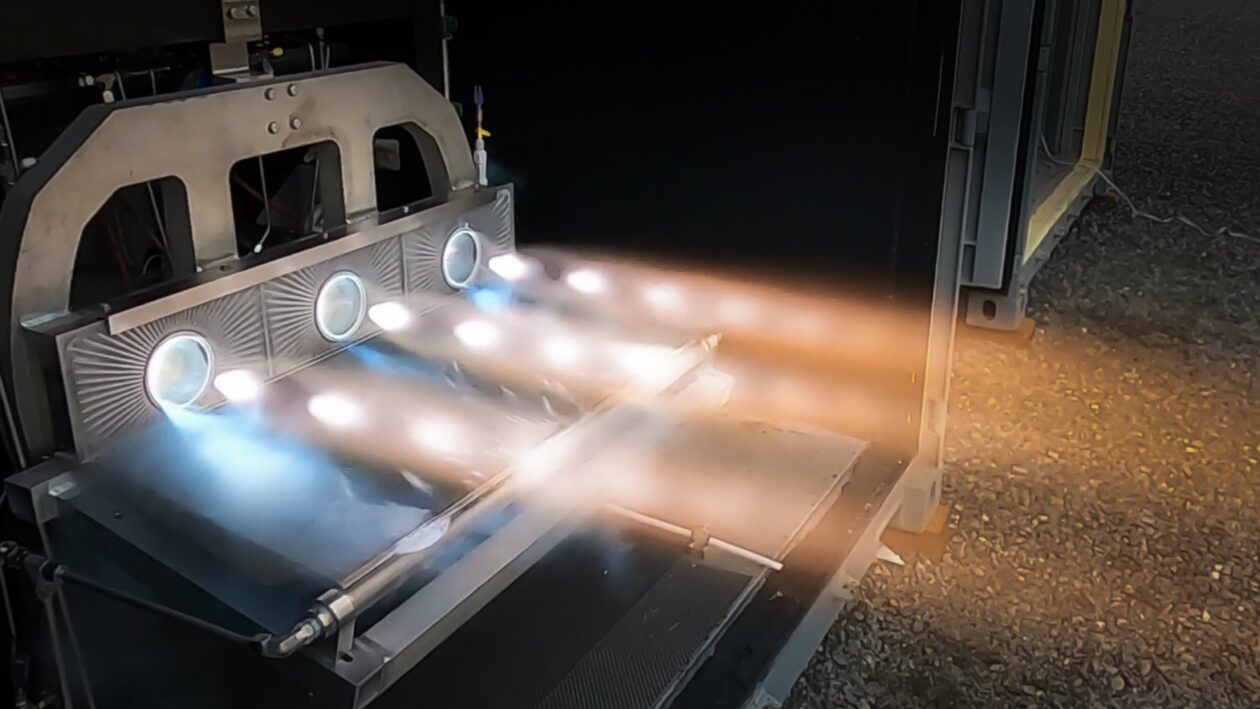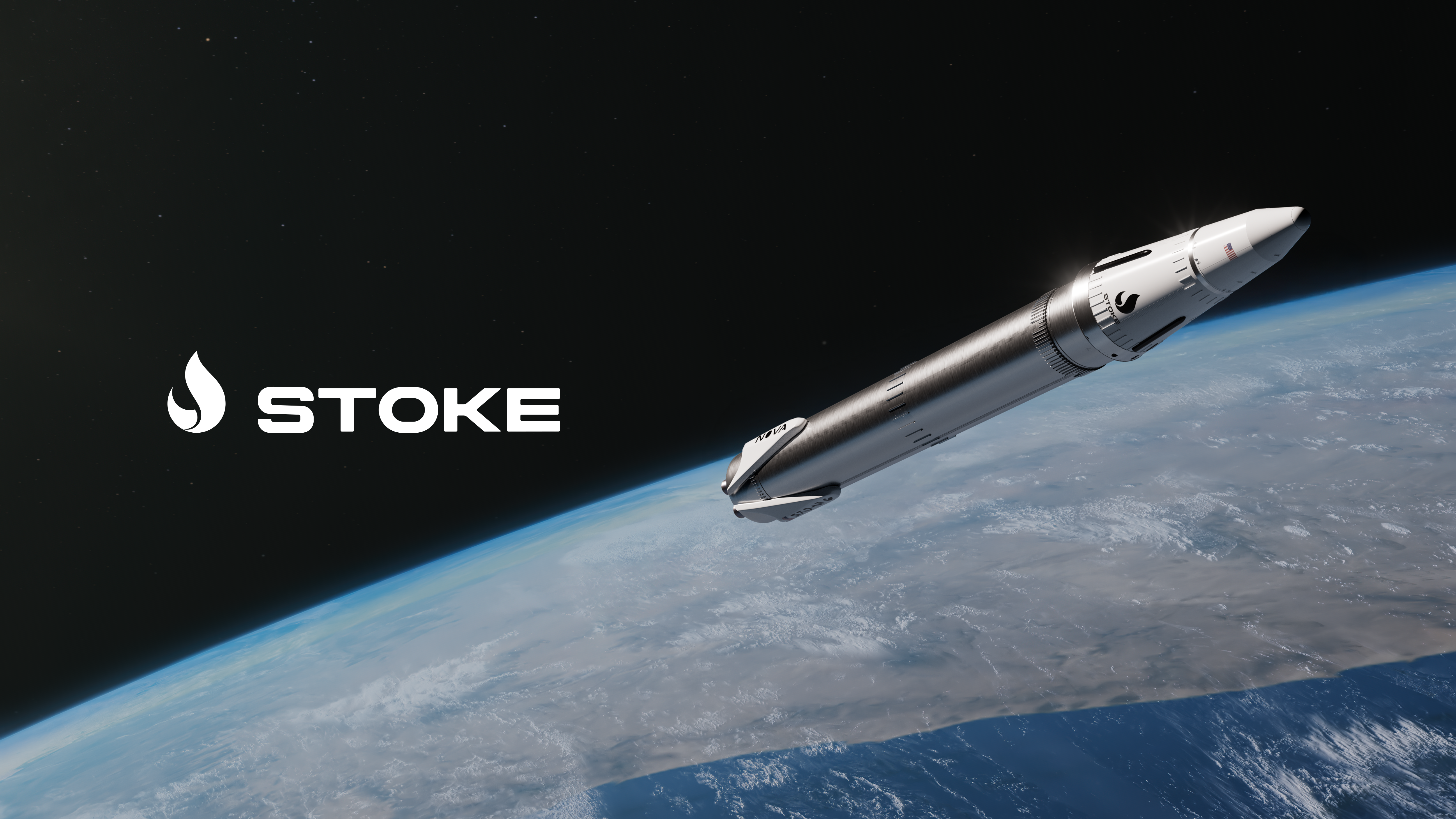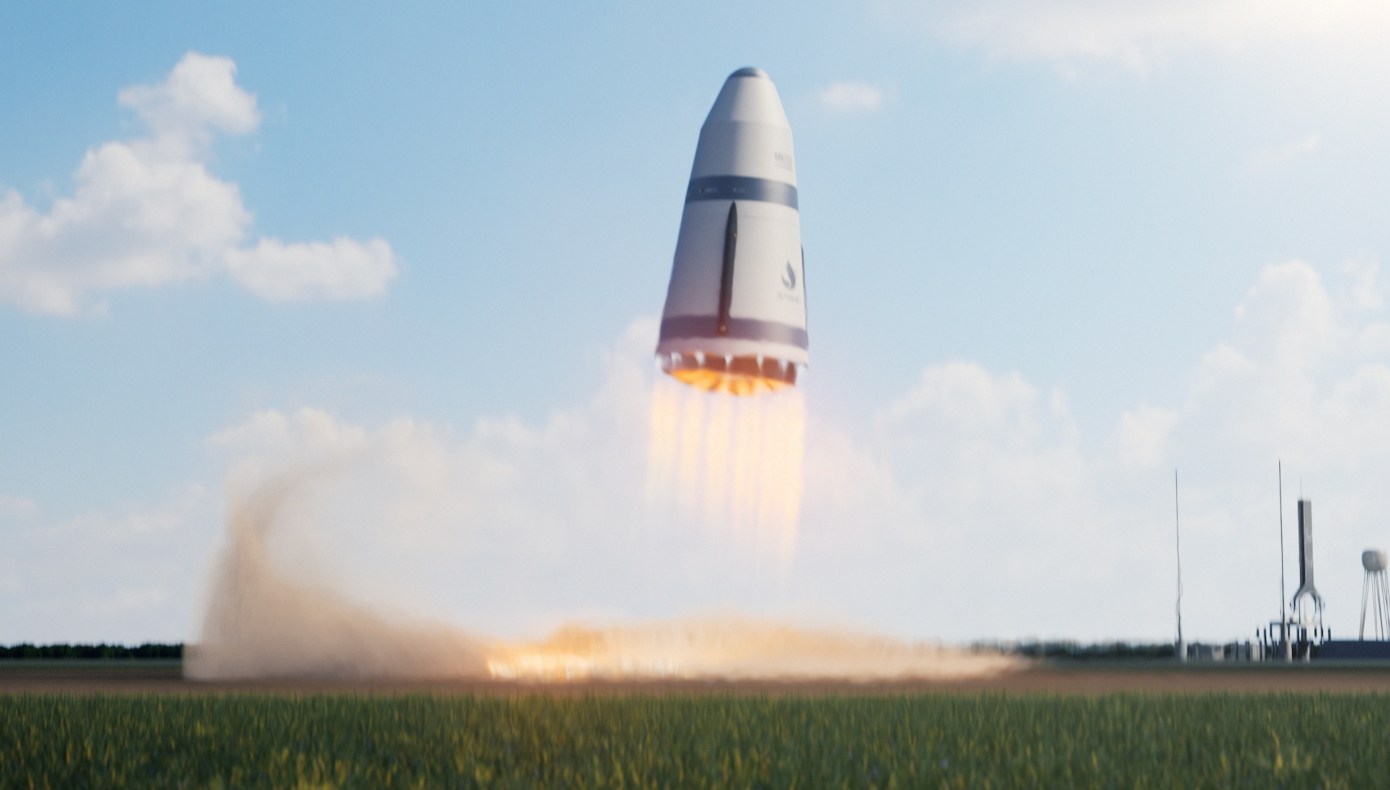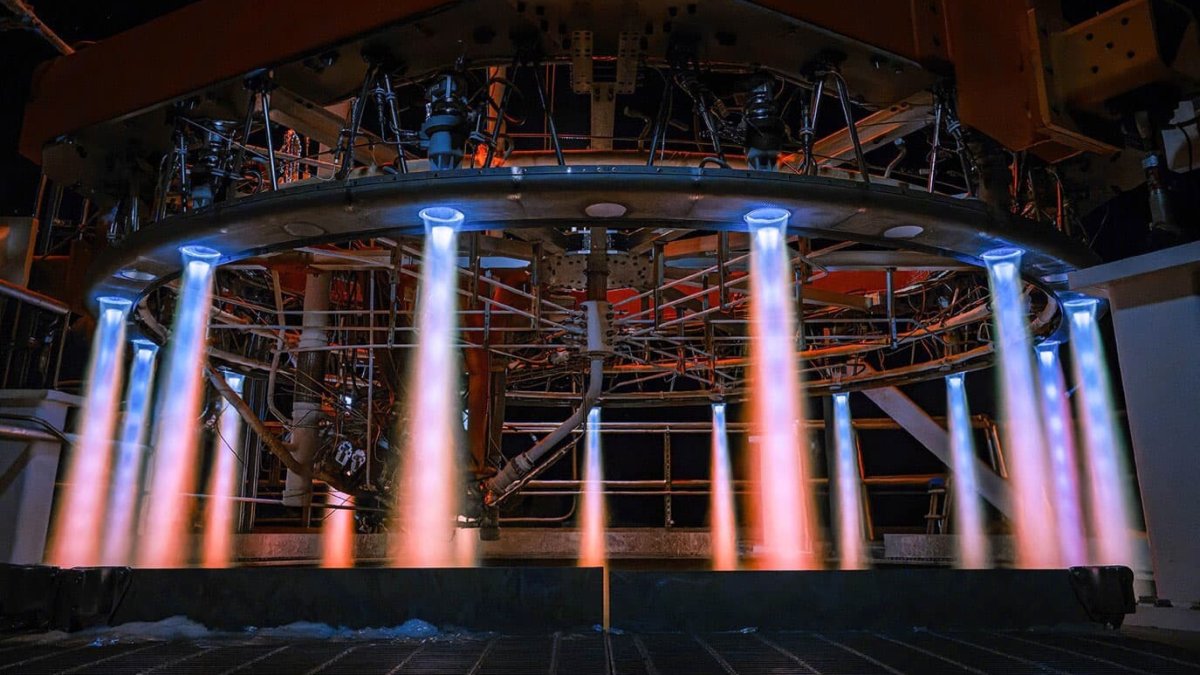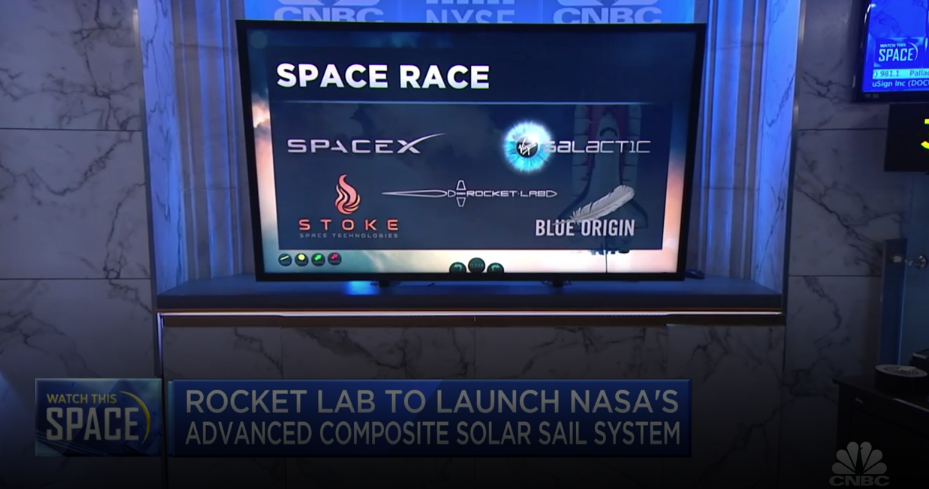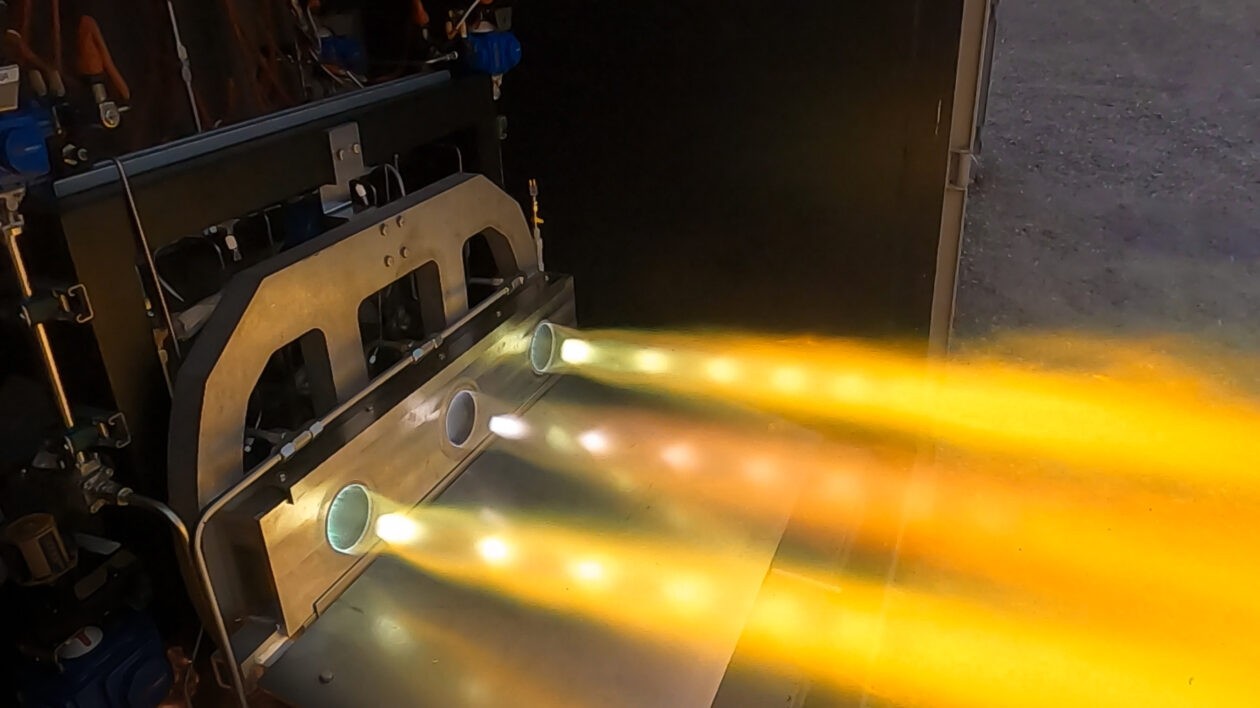Breakthrough Energy Ventures, the multibillion-dollar clean-tech initiative created by Microsoft co-founder Bill Gates, is leading a $65 million funding round to back Kent, Wash.-based Stoke Space’s effort to create a new breed of fully reusable rockets — and believe it or not, there’s a climate change angle.
“There is no better way to see the Earth and the severity of its climate challenges than looking at the entire globe from space,” Carmichael Roberts, co-leader of Breakthrough Energy Ventures’ investment committee, said today in a news release.
“Imagine being able to detect wildfires in any country within minutes, identifying oil and gas methane emissions in real time for remediation, or verifying carbon stocks globally to enable large-scale carbon offset markets,” Roberts said. “These are just a few of the far-reaching opportunities that greater access to space can provide through advanced satellite technology.”
Roberts said rocket reusability could overcome two of the barriers to such applications. “Stoke’s unique vehicle design and operational capabilities provide a path to achieving ultra-low-cost, fast-turnaround launch for dedicated orbital delivery,” he said.
The rocket business isn’t known as an environmentally friendly industry — especially when toxic chemicals like hypergolics and perchlorates come into play, and when thousands of pieces of space junk litter the sky. But Stoke Space’s co-founder and CEO, Andy Lapsa, told GeekWire that his company wants to change all that.
“There are a lot of unsustainable rocket practices that have been done through history,” Lapsa said. “I think we’re in general getting smarter about that, and a reusable second stage is a big, important part of that. We can’t be dumping rockets in the ocean as we start flying hundreds or thousands of times per year.”
Stoke Space is starting with development of a fully reusable second stage that can be brought back to Earth without having to rely on exotic shielding.
The idea is similar to what Elon Musk’s SpaceX plans to do with its massive Starship launch system, which is also designed for full reusability. But Stoke Space is shooting for a smaller rocket that’s more appropriately scaled for the small satellites that have revolutionized the space industry.
“Everything we do is with long-term sustainability and scalability in mind,” said Lapsa, a veteran of Jeff Bezos’ Kent-based Blue Origin space venture.
Stoke Space operates out of a 21,000-square-foot engineering and manufacturing headquarters in Kent, plus a rocket test facility on a 2.3-acre spread near Moses Lake’s airport. The fact that the test stand is just a few hours’ drive from the factory makes it easy to put Stoke’s hardware through its paces on a daily basis, Lapsa said.
In February, Stoke announced that it raised $9.1 million in seed funding, adding to a flow of research revenue from NASA and the National Science Foundation. Since then, the company has made rapid progress: It completed a manufacturing demonstration of a full-scale second stage, and conducted full-power test firings of components for its second-stage rocket engine, including a triplet of thrust chambers nicknamed the three-pack.
“We set some sporty goals for ourselves internally, and we actually hit those goals,” Lapsa said. That performance played into Breakthrough Energy Ventures’ decision to lead an unusually large Series A funding round.
Other participants in the round include several new investors: Spark Capital, Point72 Ventures, Toyota Ventures, Alameda Research and Global Founders Capital. There’s also new money from investors in the earlier seed round, including NFX, MaC Ventures, Alexis Ohanian’s SevenSevenSix and football great Joe Montana’s Liquid2,
As sporty as the past year has been, the coming year could be even sportier. Stoke aims to begin up-and-down flight tests of its second stage by the end of 2022.
“It’s designed to come back from orbit and land vertically at a precision location,” Lapsa said. “And that means that it can also take off from that precision location. So we’ll just fly it right off the ground. It’ll look a lot like the Starship.”
Stoke hasn’t yet announced where it intends to conduct the flight tests, and once it makes its choice, the Federal Aviation Administration would have to give its approval. Could Moses Lake be in the running? “That’d be a good guess,” Lapsa said.
The Series A funding is designed to get Stoke to the testing stage for its second stage, but after that, the company will have to develop a first-stage booster and presumably get access to orbital launch infrastructure.
For what it’s worth, Stoke plans to use liquid hydrogen as the fuel for its second stage, and methane for the first stage. Methane isn’t a carbon-neutral fuel, which runs counter to Breakthrough Energy Ventures’ zero-emission vision. But Lapsa argued that other carbon-based rocket fuels (like kerosene, for example) are worse.
“The best thing you can do, if you’re using a hydrocarbon fuel, is use the simplest hydrocarbon possible — and that’s methane,” he said.
Because of Stoke Space’s ambitions, the $65 million funding round announced today isn’t likely to be the last time the company turns to outside investors. Lapsa is already gearing up to add to Stoke’s current workforce of 29 employees, which includes engineers from Blue Origin, SpaceX and Spaceflight Inc. as well as bigger aerospace companies.
“Things are going to get more complex as we go, of course, but it’s off to a great start,” Lapsa said.
Lapsa admitted that the stresses of leading a startup can sometimes get scary, even for a rocket scientist. “It’s terrifying,” he said. “But it’s the best kind of terrifying. It’s a lot of fun, and I guess the scary part of it is why we get up every day to go do something exciting, right? If it was comfortable, it wouldn’t be as fun.”
